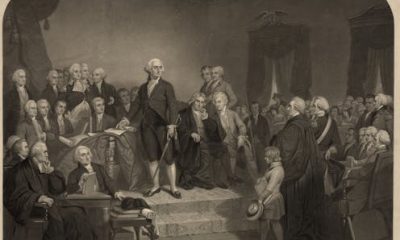Do dollhouses possess the potential to inspire young girls to design and build? Kosamtu via Getty Images
As a kid growing up in the suburbs of St. Louis, Missouri, in the ’80s, my sister and I spent a lot of time playing with Barbie in the basement of our single-family home. I loved dressing her and imagining her life. But the best part about Barbie was her house.
I learned recently that the Barbie house I had was the Dreamhouse A-frame designed in 1979. The house takes its name from the fact that the front view of the steep roof looks like the capital letter “A.”
I clearly remember the distinctive yellow, orange and white color scheme and the sloping roof. But the best part was that the house could be configured in different ways. The house opened and closed, and walls and rooms could switch places. I could change Barbie’s whole world by changing her space. That was a powerful discovery.
Perhaps for many girls who grew up playing with a Barbie doll, it was doing her hair that might be the most memorable. But for me looking back – and as Barbie enthusiasts celebrate National Barbie Day on March 9, 2024, the iconic doll’s 65th year – it was playing with Barbie’s house that stands out. It was probably the first time I realized that the places where we live, work and play all serve to shape who we are.
Today, I am an architect and professor. I lead a program for high school students in South Central Los Angeles at the University of Southern California School of Architecture. The program, called the A-LAB Architecture Development Program, provides a pathway for young people – and especially for young women – into architecture as a field.
Only 25% of people working as architects in the U.S. are women. For comparison, 36% of lawyers are women and 41% of physicians and surgeons are women. This figure, and other facts about women in architecture, can be found in “Where are the Women? Measuring Progress on Gender in Architecture,” written by Kendall A. Nicholson, director of research, equity and education at Association of Collegiate Schools of Architecture.
Having fun at work
A few years after my Barbie house experience, I took a school field trip to visit an architecture office in St. Louis. There I saw people who seemed like they were having fun at work.
Everywhere I looked, I saw pencils, markers, scissors, glue, cardboard and plenty of other tools I had never seen before. The office was full of creative people making drawings and models of new buildings and landscapes. The energy I felt there was exciting and palpable. These people had purpose. I decided that day that I would become an architect.
Only 25% of architects are women.
Kelvin Murray via Getty Images
I didn’t realize it then, but looking back, I can connect the fun I had with Barbie’s Dreamhouse to the work people were doing in the architecture firm. We were both using architecture and design to shape the world around us.
Providing practical experience
In the A-LAB program that I run, students spend time learning how to see, draw and design. They use those skills to develop conceptual design projects in their own neighborhoods in South Central Los Angeles.
Students are asked to think about and research the needs of their communities and to propose a new project that fulfills a need that has not yet been met. One student proposed an outdoor community pool with a shade structure. The shade structure is for fresh air, exercise and a place for people of all ages to hang out. Another student proposed a small theater with a stage and snack bar, where students in bands could practice in the evening when the high school is closed. Yet another proposed a homework and day care hub, so that students and younger siblings could have a safe place to go after school. Overall, each of these design projects aim to emphasize architecture’s role in positively shaping culture and community.
So far, over 80 local students have participated in A-LAB. They also earned four units of college credit in the process.
The majority of students tell us that A-LAB has changed the way they see the buildings and places we use to live our lives. The program attracts both young men and women, yet with each new A-LAB cohort, we see an increase in the percentage of young women participating. Over the past three years, 65% of A-LAB students have been young women. And this semester alone, a whopping 85% of A-LAB students are young women.
This trend could be part of the steady increase in women entering architecture schools. Or it could be that successful female students are sharing their experiences with younger female students and encouraging them to apply.
I also think it doesn’t hurt that I show up to the schools and talk about the program and invite students to consider joining it. I think there is really something about a female representing the outward face of A-LAB that makes it seem more welcoming to young women. And to think it all started with a little girl playing with a Barbie dollhouse in her basement some 40 years ago.
Lauren Matchison does not work for, consult, own shares in or receive funding from any company or organization that would benefit from this article, and has disclosed no relevant affiliations beyond their academic appointment.
Advertisement

Advertisement
Contact Us
If you would like to place dofollow backlinks in our website or paid content reach out to info@qhubonews.com











